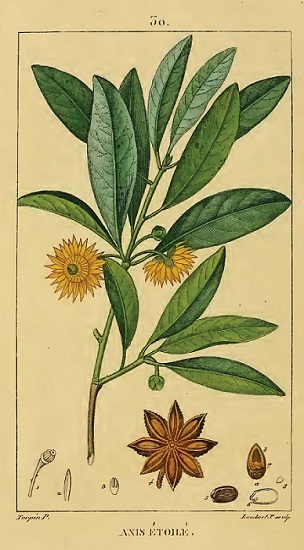author: Dr. Kevin Curran
updated: 1-22-2020
Unbeknownst to many, the flu medicine known as Tamiflu is derived from a plant called the Chinese star anise.
The flu has been top of mind for me as I succumbed to this virus last month.
My wife I spent a weekend with family in a small and intimate cabin in northern Arizona. My brother in law arrived at the cabin with a confirmed case of influenza A, the virus that causes the flu. Within a few days, this virus was inside my body and my fever began to spike.
I immediately began taking Tamiflu, which is an anti-viral medicine. Tamiflu is a small molecule that disrupts one of the key enzymes (neuraminidase) that the flu virus relies on in order to proliferate inside our body. Fortunately, Tamiflu is now off patent so with insurance I paid $7. Thank goodness for generics!
Somewhere in my zombie like state I began reading about the history of Tamiflu. In the 1990s, scientists at Gilead designed the Tamiflu molecule (officially called Oseltamivir) using shikimic acid as a starting point for chemical synthesis. At that moment in time, the only way to get large quantities of shikimic acid was from an extract of Chinese star anise.

Chinese star anise (Illicium verum)
The well recognized star shaped fruit is seen at the bottom of this color plate.
Color plate from François-Pierre Chaumeton’s Flore Medicale, published in 1833.
Chinese star anise (Illicium verum) is an evergreen tree native to northeast Vietnam and southwest China. The star shaped fruit of this plant is often collected before ripening and used as a seasoning. Oil from the fruit is very fragrant and is commonly used for cooking, perfumes and skin creams.
Interestingly, this star shaped fruit has long been used in traditional Chinese medicine for the action of treating colds and regulating the flow of Qi (Wang, 2011).
Currently, about 90% of the world’s star anise crop is used to generate shikimic acid. In fact, during the 2009 swine flu outbreak there was a huge demand for stockpiles of Tamiflu and this caused the price of star anise to spike.
Tamiflu was bought by Roche and saw FDA approval as a drug in 1999. Patent windows for pharmaceuticals are 20 years, which is why the generics have now moved in and – assuming you have insurance – you can pick up this drug for cheap.
Final note:
With the advent of recombinant biology, we have now learned to trick bacteria (E.coli) into biomanufacturing the shikimic acid molecule. Therefore, we are no longer wholly dependent on star anise to pull us out of the depths of a zombie like fever.
